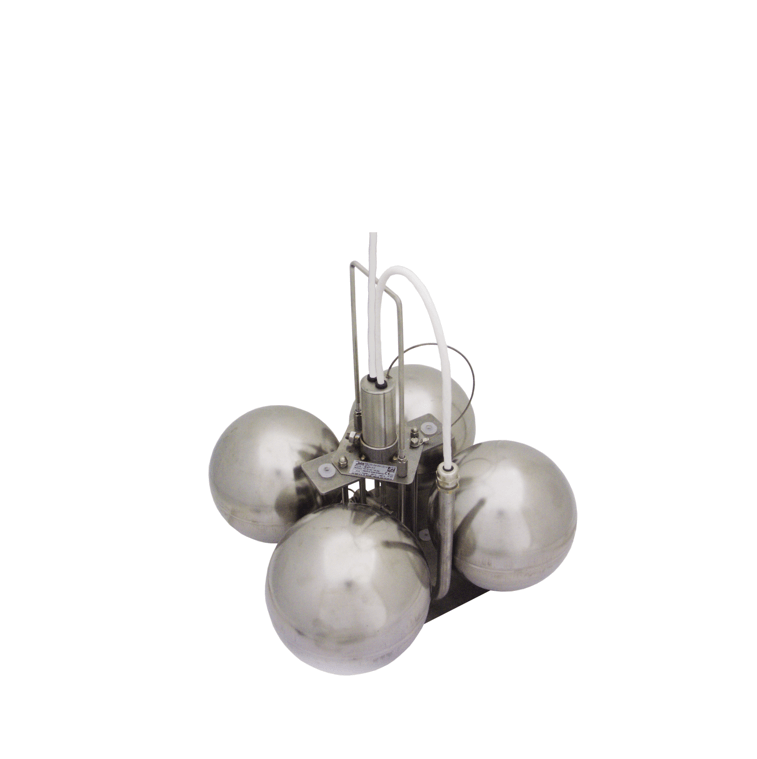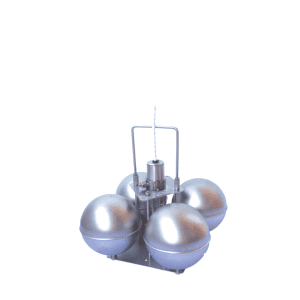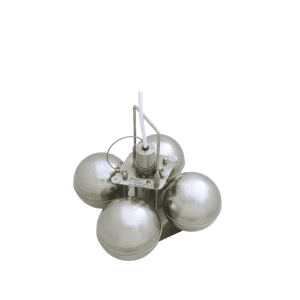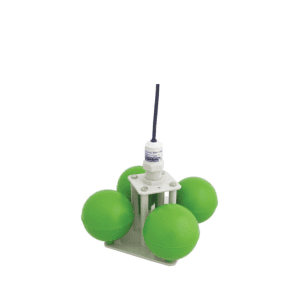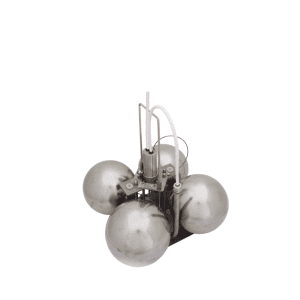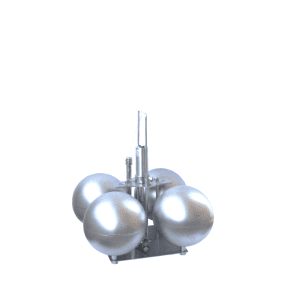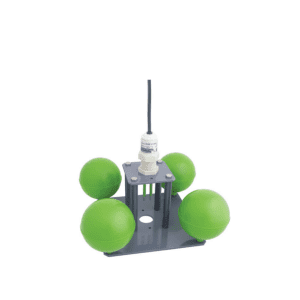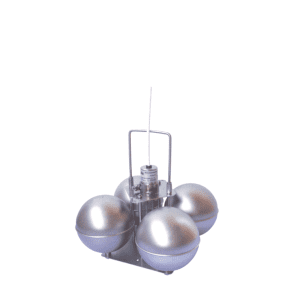SCHE 2/Ex (ILS version)-1G floating electrode JOLA in Ex version
Po naročilu. Pošljite povpraševanje.
Delivery time: okvirno 2 tedna
- EC type-examination certificate INERIS 03ATEX0157X
- Design: 1 control electrode and 1 ground electrode
- Protection rating: IP65
- floats: 4 units 316 Ti stainless steel, approx. 130 mm Ø
- temperature range: – 20 °C to + 60 °C
Description
The SCHE 2/Ex (ILS version)-1G JOLA floating electrode in Ex version is designed for detection of light liquids in sumps, tanks, pump shafts, tanks, vessels. For floating electrodes to work properly, there must be a clear distinction between heavy, conductive liquids and light, non-conductive liquids. The tips of the electrodes must be just below the surface to ensure that the electrodes are correctly measured.
The Ex floating electrode usually floats on a conductive liquid such as water. It is connected via the mandatory Ex junction box to an Ex-electrode relay, which supplies it with a low safety voltage. The height of the electrode rod is set so that the tips of the electrode rods are permanently under water. Depending on the movement of the liquid surface, the thumb electrode should be adjusted forwards or downwards. Although the rod electrode tips should be continuously under water, they should only be under water, so that when a conductive liquid (water in our case) covers a non-conductive liquid (such as oil), the thin layer of non-conductive liquid (oil) is sufficient to lift the rod electrode tips from the conductive water layer into the non-conductive oil layer, thus interrupting the current flowing from the relay of the Ex electrode through the rod electrode, and thus to activate the alarm.
For example, if oil flows onto a calm water surface after a leak, fine adjustment of the thumb electrode ensures that the oil layer is only 3 to 10 mm thick, which is sufficient to interrupt the control current flowing through the thumb electrode and activate the alarm.
To ensure that the Ex floating electrode works, there must be a minimum liquid level above the ground (see technical data of individual Ex floating electrodes). If this condition is not met, the two ends of the electrode rods will no longer be under water – in other words, they will not be electrically bridged by a conductive liquid. This will normally cause an unwanted alarm activation via the connected Ex-electrode relay. The only models with an alarm override contact for this option are SCHE 2/Ex (ILS Variants) -. G.
The floating electrode SCHE 2/Ex …, equipped with 2 electrode rods, is designed for connection via the mandatory OAK/SCHE/NR/2x1MW terminal box to the relay for the electrode Ex NR 5/Ex, version A.
The NR 5/Ex electrode relay, version A, is equipped with a response sensitivity of approximately 30 kW (approx. 33 µS). For applications during prolonged rainfall events that cause a reduction in conductivity, the response sensitivity may not be sufficient. In this case, the NR 5/Ex electronic relay, version A, can be equipped with a higher response sensitivity of about 200 kW (about 5 µS).
Latencies SCHE 2/Ex (ILS version)-1G
- Application:
- for use in intrinsically safe circuits in potentially explosive atmospheres of zone 1 or 2
- EC type-examination certificate INERIS 03ATEX0157X
- Design: 1 control electrode and 1 ground electrode
- electrode rods: 316 Ti stainless steel; Ø 4 mm, covered with PVDF shrink tube; length: approx. 45 mm, other lengths on request
- electrode rod head: 316 Ti stainless steel
- Protection rating: IP65
- Connecting cable: PTFE cable, in the electrode head, other cable on request; length: 2 m, longer on request
- electrode holder, stabiliser plate and supports: 316 Ti stainless steel or other stainless steel
- floats: 4 units 316 Ti stainless steel, approx. 130 mm Ø
- min. conductive liquid level above ground to ensure floating electrode operation (with d = 1 g/cm3): 130 mm
- temperature range: – 20 °C to + 60 °C
- pressure resistance: for non-pressure applications
More technical information can be found under the Documentation tab in the attached pdf documents.
Welcome to the article ”Conductive Measurement of Liquids”
Povpraševanje
You may also like…
For your victories, with our solutions. Call us:
Contact us.
Call us:
+386 (0)2 62 96 720
Email us:
[email protected]

